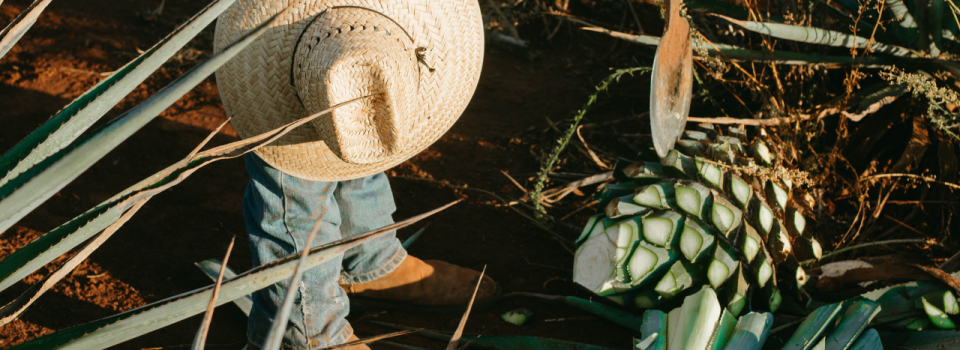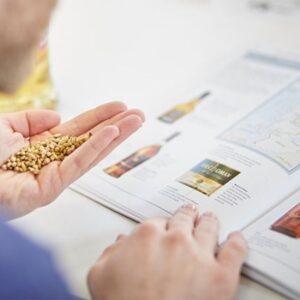Once limited to late-night party shots, tequila is now undergoing a true renaissance.
Featured on top cocktail menus, sought after by craft spirits enthusiasts, and celebrated for its unique Mexican terroir, tequila is gaining global recognition as a premium spirit.
But how much do you really know about this iconic Mexican distillate?
Did you know it can only be made from one specific species of agave? That it’s protected by an Appellation of Origin? Or that some tequilas can rival the complexity of the finest aged whiskies?
To understand tequila is to dive into the soul of Mexico — its land, its time-honored traditions, and its fiery, living heritage.
It also means training your palate to tell the difference between a fresh, herbal blanco and a deep, woody extra añejo.
To guide you through this fascinating universe, the WSET Spirits course offers a structured, in-depth and globally recognized approach.
With this training, you’ll not only taste better — but also explain better, sell better, and most of all: share the depth and beauty of a spirit too often misunderstood.
1. What Is Tequila? A Spirit Deeply Rooted in Mexican Soil
A Terroir, a Plant, a National Pride
Tequila can only be produced in specific regions of Mexico.
It holds a Denomination of Origin (DO) — a legal protection similar to the French AOC — which limits its production to five states: Jalisco (home to the town of Tequila), Guanajuato, Michoacán, Nayarit, and Tamaulipas.
However, over 95% of tequila comes from Jalisco, thanks to its iron-rich volcanic soils and semi-arid climate, which provide the perfect conditions to grow the Blue Weber Agave (Agave tequilana Weber azul) — the only agave variety permitted in tequila production.
This impressive, spiky plant — often mistaken for a cactus — takes 7 to 10 years to fully mature.
Time is a crucial ingredient in tequila-making. Each terroir — from altitude to sunlight exposure and soil composition — affects the sugar content, acidity, and ultimately, the aromatic profile of the final spirit.
From Sacred Plant to Modern Spirit: A Transformed Tradition
Long before distillation, agave was used by pre-Hispanic cultures to produce a fermented drink called pulque.
When Spanish colonizers arrived in the 16th century, they brought rudimentary stills — and with them, a new process of distillation was born. That’s how modern tequila emerged.
But not all are created equal:
- A real tequila must contain at least 51% Blue Weber Agave — though the best tequilas are labeled 100% agave.
- It must be produced and bottled in Mexico, under the strict supervision of the Consejo Regulador del Tequila (CRT).
- It must follow a regulated production process: cooking, fermentation, distillation, and — in some cases — oak aging.
Every step and decision — from the type of oven used to cook the agave, to the yeast strain, to the aging vessel — shapes the taste, balance, and complexity of the final tequila.
This nuanced craft — blending tradition, terroir, and technique — is exactly what you’ll master in the WSET Spirits qualification.
Once you understand the process, you’ll never confuse a handcrafted blanco tequila with a mass-produced flavored mixto ever again.
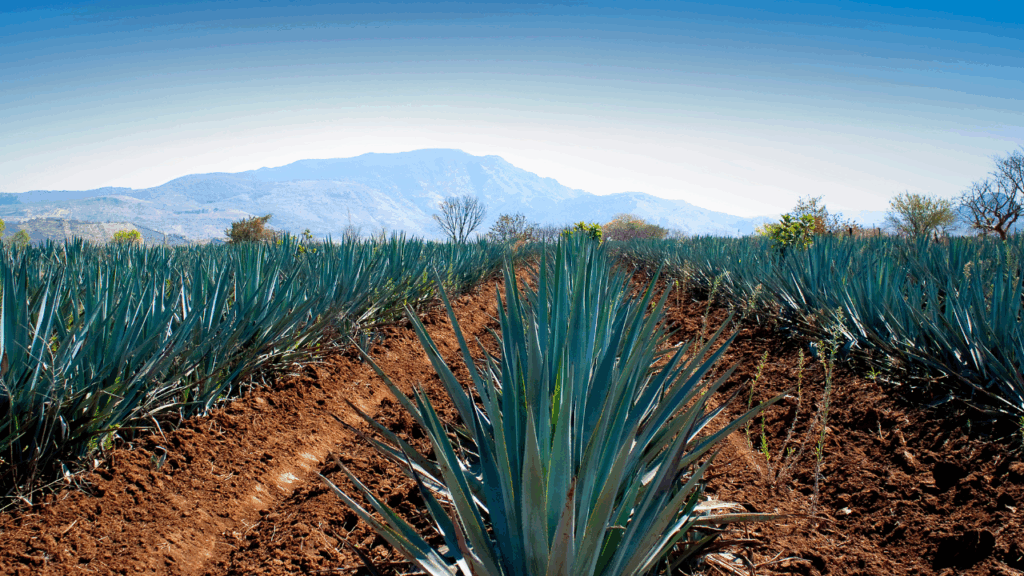
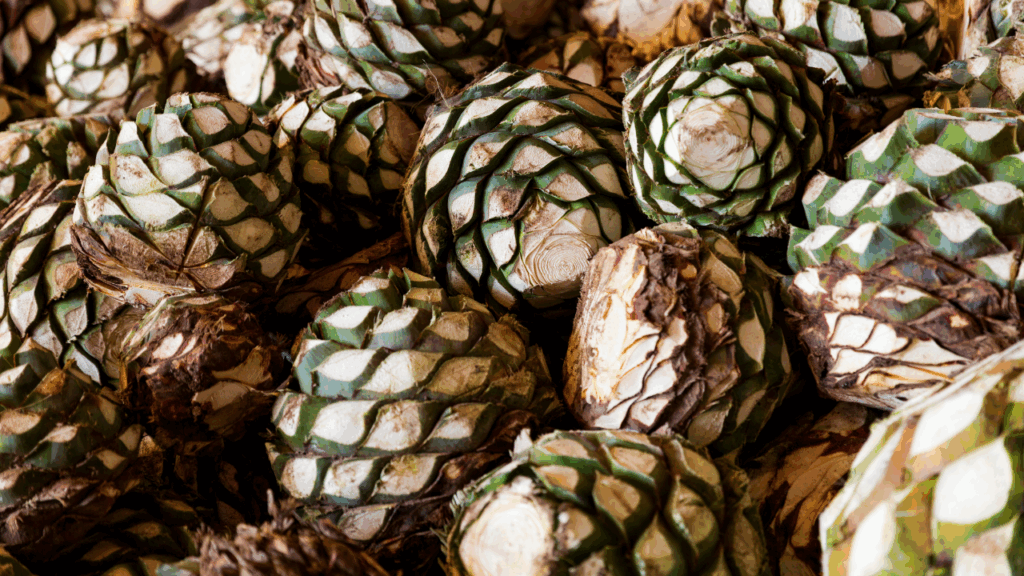
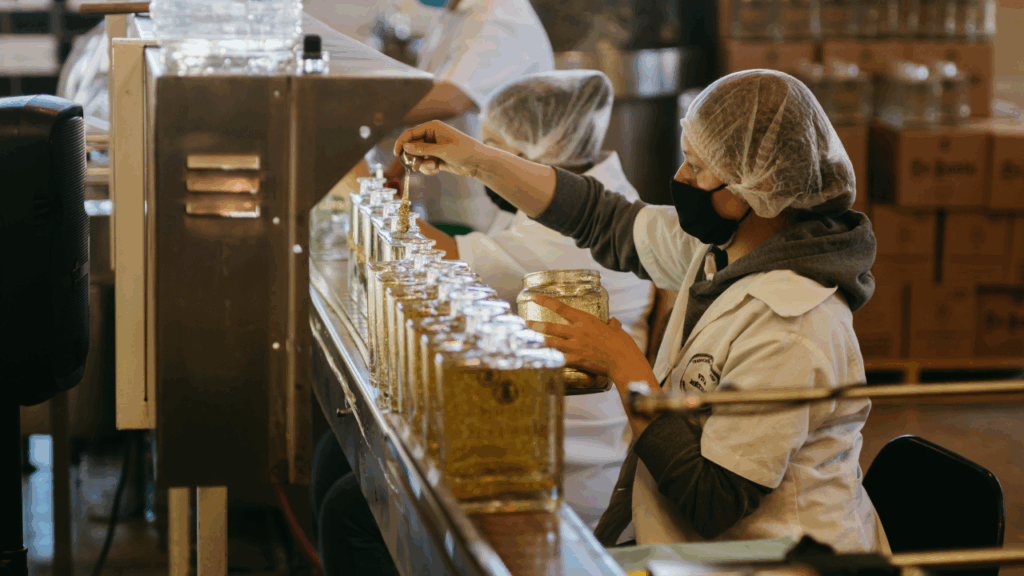
2. How Is Tequila Made? A Patient Art of Transformation
To truly understand it, you must first understand the care and craftsmanship behind every step of its production.
From field to bottle, it is the result of patience, technique, and a deep respect for the living plant.
1. Cultivating the Blue Agave
It all begins in the fields.
The Blue Weber Agave (Agave Tequilana Weber azul) is a majestic succulent with thick, pointed leaves. It takes 7 to 10 years to fully mature — during which time it stores sugars in its core, known as the piña, that will later be used for fermentation.
The harvest is done entirely by hand by skilled workers called jimadores, who wield a flat-bladed tool called a coa to trim away the leaves and expose the piña. Some piñas can weigh up to 40 kg.
Fun fact: Each agave can only be harvested once in its lifetime — making it a long-term commitment and a serious bet on the future.
2. Cooking the Piñas
Once harvested, the piñas are cooked to convert their starches into fermentable sugars.
There are two main cooking methods:
- Traditional brick ovens (hornos):
Slow-cooking at low temperatures for several days. This method enhances complexity and brings out notes of baked agave, caramel, and earth. - Autoclaves (steam pressure cookers):
Faster and more common in modern production, with cleaner and lighter results.
Some producers use diffusers, an industrial technique that extracts sugars using high-pressure water or solvents — it’s faster, but often considered lower-quality by traditionalists.
3. Extracting the Juice
After cooking, the softened piñas are crushed to extract the sweet juice, known as mosto.
This can be done using:
- Mechanical rollers, or
- The traditional tahona method — a massive stone wheel pulled by a tractor (or mule), still used by some artisanal distilleries to create richer, more expressive spirits.
4. Fermentation
The mosto is then fermented for 3 to 7 days in large vats made of stainless steel, wood, or concrete.
Yeasts — whether indigenous or cultivated — convert the sugars into alcohol and aromatic compounds.
This stage gives tequila its soul.
Every variable — from yeast strain to fermentation time and temperature — plays a crucial role in shaping the final flavor profile.
5. Distillation
The fermented liquid is typically distilled twice (rarely three times) in either copper pot stills or stainless steel columns.
- The first distillation produces a cloudy, low-alcohol spirit called ordinario.
- The second distillation refines it into clear, aromatic tequila with a higher ABV and concentrated flavor.
The result is a blanco tequila if bottled immediately…
Or a base spirit that can be aged to become a reposado, añejo, or extra añejo tequila.
Want to explore other spirits?
Check out our other guides: Everything You Need to Know About Whisky, and A Complete Introduction to Rum!
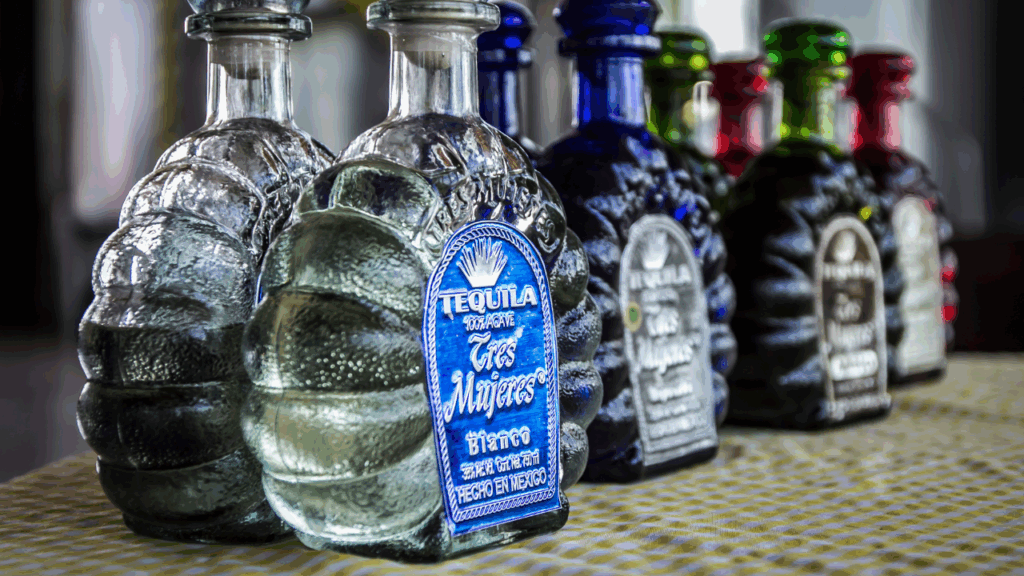
3. The Different Styles of Tequila (and How to Recognize Them)
Contrary to popular belief, not all are created equal.
Their aromatic profile, texture, and tasting potential vary greatly depending not only on how they’re made — but also on how long they’ve been aged.
Let’s break down the five main styles of tequila you should know:
1. Tequila Blanco (aka Silver)
- Aging: Unaged or rested for less than 2 months
- Profile: Crisp, dry, vegetal, sometimes peppery
- Best enjoyed: In classic cocktails (Margarita, Paloma), or neat if well-made
This is the purest expression of agave — raw, vibrant, and often slightly spicy or citrusy.
Blanco tequilas reveal the true DNA of the distillery and the agave used.
Pro tip: Want to taste the soul of a house? Start with their blanco.
2. Tequila Reposado
- Aging: 2 to 12 months in oak barrels
- Profile: Smoother, rounder, with hints of vanilla and soft oak
- Best enjoyed: Neat or in elevated cocktails
Reposado (meaning “rested”) strikes a beautiful balance between fresh agave flavors and soft woody notes. Expect mild spice, vanilla, caramel, and sometimes a touch of nuttiness.
A great choice for those just starting to explore aged tequilas.
3. Tequila Añejo
- Aging: 1 to 3 years in oak
- Profile: Deep, rich, and complex (think chocolate, dried fruit, toasted wood)
- Best enjoyed: Neat, as a sipping spirit
Añejos are bold and structured — ideal for slow, contemplative tasting.
Their depth can rival high-end rums or single malt whiskies in elegance and complexity.
Perfect for after-dinner moments or serious tastings.
4. Tequila Extra Añejo
- Aging: Over 3 years in oak
- Profile: Intense, layered, tannic, almost liqueur-like
- Best enjoyed: Neat, like a fine Cognac or aged whisky
A relatively recent category (since 2006), Extra Añejo tequilas are rare and luxurious.
Expect aromas of cedar, leather, dried fruit, and dark chocolate.
Often priced like a fine spirit — because it is.
5. Tequila Cristalino
- What it is: An Añejo or Extra Añejo filtered through charcoal to remove color
- Profile: Oak-aged complexity + visual clarity
- Best enjoyed: Over ice or as a refined digestif
Cristalino is one of the newest and trendiest tequila styles — especially in Mexico and high-end cocktail bars.
It offers the mellow richness of aged tequila with the fresh, clear look of a blanco.
Ideal for those who want smoothness and sophistication in one sip.
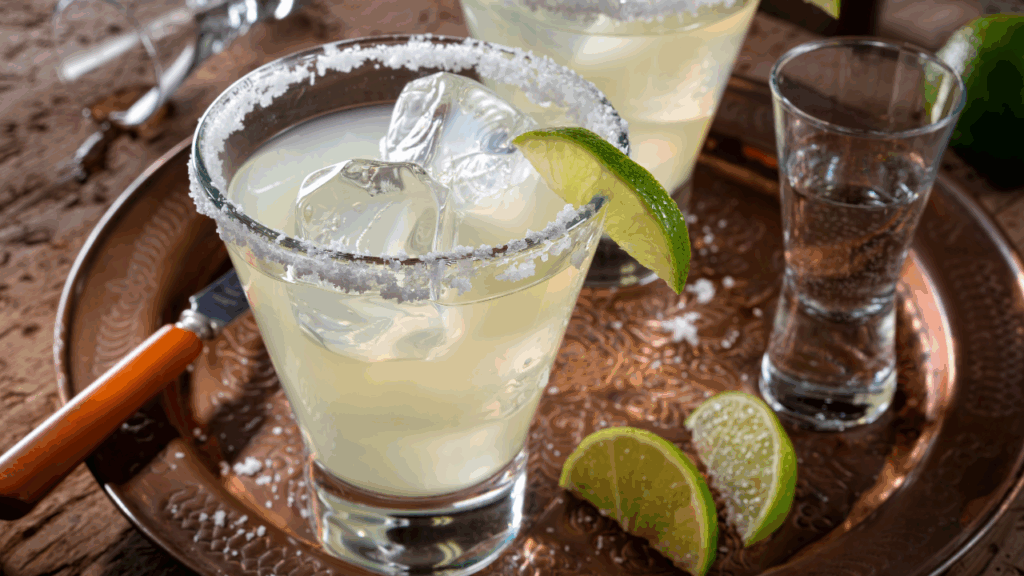
4. How to Properly Taste Tequila (Like a Pro)
Forget the salt and lime shots. It deserves better.
Just like a fine wine or single malt whisky, a great tequila should be savored slowly and thoughtfully. With the right method, even a simple sip can become a deep sensory experience.
Here are the 5 essential steps to taste tequila properly — whether it’s a fresh Blanco or an aged Extra Añejo:
1. Choose the Right Glass
Skip the shot glass.
Opt for a white wine glass, a tulip-shaped glass (like a Riedel tequila glass or a grappa glass).
This shape helps concentrate aromas so you can analyze them properly, without letting them escape too quickly.
2. Observe the Color (and Texture)
Swirl it gently in the glass and examine its appearance.
- Blanco: Clear, silvery
- Reposado to Extra Añejo: Pale gold to deep amber
Watch for the “legs” (the droplets that form on the inside of the glass).
Thicker legs = more viscosity = richer texture.
3. Smell the Aromas (Gently)
Bring your nose close to the rim — but don’t dive in.
Take short, soft sniffs to avoid overwhelming your senses with alcohol.
Try to identify:
- Agave: cooked, fresh, herbal
- Wood: vanilla, cinnamon, cocoa
- Floral, fruity, or spicy notes
Pro tip: Smell in 3 stages —
- With the glass still
- With a slow swirl
- With a faster swirl for deeper layers
4. Sip Mindfully
Take a small sip and let it roll across your tongue.
Pay attention to:
- Attack: smooth? peppery? vibrant?
- Body: light, silky, warming?
- Finish: long? fresh? spicy? oaky?
If you’re comparing several styles (e.g. Blanco vs Añejo), consider spitting — like you would in a professional tasting.
5. Take a Second Sip
The first sip warms up your palate.
The second is where the real complexity shines through.
Tasting tequila properly transforms it from a party drink to a refined experience.
Want to learn more? Check out our full article on the NEW WSET Level 3 in Spirits at Weeno — and discover how to taste and evaluate it like a certified expert.

5. The Best Food Pairings with Tequila (Beyond Tacos & Guac)
Forget the clichés of shots and guacamole.
Tequila is a refined, complex spirit that can enhance a wide range of dishes — well beyond traditional Mexican cuisine.
Here are some original and delicious pairing ideas, categorized by style:
🥃 Tequila Blanco
Profile: Fresh, vibrant, mineral, with notes of raw agave, citrus, and white pepper
Top pairings:
- Sea bream ceviche or tuna tartare: The acidity and freshness create perfect harmony
- Oysters or shellfish: The salinity + crisp agave lift the briny notes
- Salmon sashimi or sushi: Blanco enhances the umami and sea flavors
- Fresh cheeses: Goat cheese, feta, ricotta — for light, herbal combinations
- Cocktail pairing idea: Margarita + grilled fish tacos = a vibrant flavor bomb
🥃 Tequila Reposado
Profile: Round, smooth, with notes of vanilla, cooked agave, honey, and hazelnut
Top pairings:
- Roast chicken or caramelized pork: The oak notes echo the roasted meats
- Aged cheese quesadillas: Creaminess meets warm spice
- Roasted butternut squash or veggie tacos: Earthy sweetness is amplified
- Baked camembert with honey: A rich, sweet-savory match
- Gastronomic twist: Try a corn crème brûlée with a sip of Reposado — surprisingly addictive
🥃 Tequila Añejo or Extra Añejo
Profile: Complex, rich, with notes of oak, cocoa, coffee, leather, and dried fruits
Top pairings:
- Grilled ribeye steak: Tannic power meets woody depth
- Spiced lamb stew: A deep, almost meditative match
- Dark chocolate (70%+): Bitterness and warmth in perfect sync
- Cigar & Añejo tequila: For lovers of bold, contemplative digestifs
- Dessert pairing: Extra Añejo + dark chocolate fondant with chili = unforgettable
Bonus: The One Pairing to Avoid
Avoid ultra-spicy dishes like ghost pepper or habanero-based recipes.
The alcohol amplifies the heat and overwhelms the palate.
6. How to Choose a Good Tequila (and Avoid the Tourist Traps)
At first glance, most bottles seem similar.
But in reality, the gap in quality can be enormous — between artificially sweetened industrial blends and small-batch artisan tequilas made from 100% agave.
Here are the 5 key criteria to help you choose the right tequila every time:
1. Look for “100% Agave” on the Label
This is the golden rule.
If it doesn’t say “100% agave”, it’s most likely a mixto — a blend of agave and other sugars (usually cane sugar). These are cheaper to produce and often have:
- A cloying sweetness
- Artificial flavors
- Less complexity
“100% Agave” = cleaner, more authentic, easier to digest, terroir-driven flavor.
2. Check the Geographical Origin
Tequila is a protected designation of origin (PDO).
It must come from five authorized Mexican states, mainly:
- Jalisco (home to the town of Tequila)
- And to a lesser extent: Nayarit, Tamaulipas, Guanajuato, and Michoacán
The best ones often come from:
- Los Altos (Highlands): fruitier, floral styles
- Tequila Valley (Lowlands): earthier, more herbal profiles
3. Don’t Be Fooled by Color
Some tequilas are artificially colored with caramel — especially cheaper Reposado or Añejo versions.
Genuine aged tequilas get their color naturally from oak barrels.
Look for details like “aged in oak barrels” or specifics about the aging process.
4. Be Wary of Mass-Market Brands
Many big-name tequilas (especially supermarket ones) use:
- Industrial techniques
- Flavoring additives
- Glycerin to soften the texture artificially
Instead, seek out craft or small-batch producers who:
- Work with traditional methods
- Respect agave maturity
- Value transparency and terroir
5. Trusted Brands We Recommend
If you’re unsure where to start, here are some top-quality brands with strong reputations:
- El Tesoro – artisanal, 100% agave, great value
- Tapatio – authentic, family-run distillery
- Fortaleza – elegant, traditional methods
- G4 Tequila – slow distillation, eco-conscious
- Ocho Tequila – vintage, single-estate, terroir-driven
Pro tip: Start with a high-quality Blanco.
It’s the purest, most expressive version — and reveals the true craftsmanship of the distillery.
In Summary
How to Choose a Great Tequila:
- Always go for 100% agave
- Prefer it from Jalisco, especially Highlands or Valleys
- Avoid fake colors and sweeteners
- Choose artisan or small-batch producers

Tequila: A World-Class Spirit Worth Rediscovering
For too long, tequila has been dismissed as a party shooter or drowned in sugary cocktails.
But behind its festive image lies a deep heritage of craftsmanship, terroir, and ancient tradition.
From slow-grown agave to artisanal distillation and careful barrel aging, tequila offers a vibrant, complex, and expressive aromatic palette.
Blanco, Reposado, Añejo, Extra Añejo…
Each style tells a different story. Each producer leaves their mark.And the best part? It’s never too late to refine your palate.
Ready to dive deeper into the world of tequila?
At Weeno, our WSET Spirits courses give you the tools to:
- Understand how spirits like tequila, rum, whisky, or cognac are made
- Taste and analyze like a professional
- Use accurate, international spirits vocabulary in both French and English
- And earn an internationally recognized qualification through WSET Spirits
Whether you’re a curious enthusiast or a hospitality professional, our courses are designed to help you level up — with no pressure, just precision.
📚 Explore Our Upcoming Spirits Courses: www.weenodrinksacademy.com
📍 In Paris, Marseille, or 100% online
🎓 In French, English, or a bilingual format
🌎 Train with expert educators and join a global network of spirits lovers
Because in every well-crafted glass of tequila… There’s a whole world waiting to be explored.
